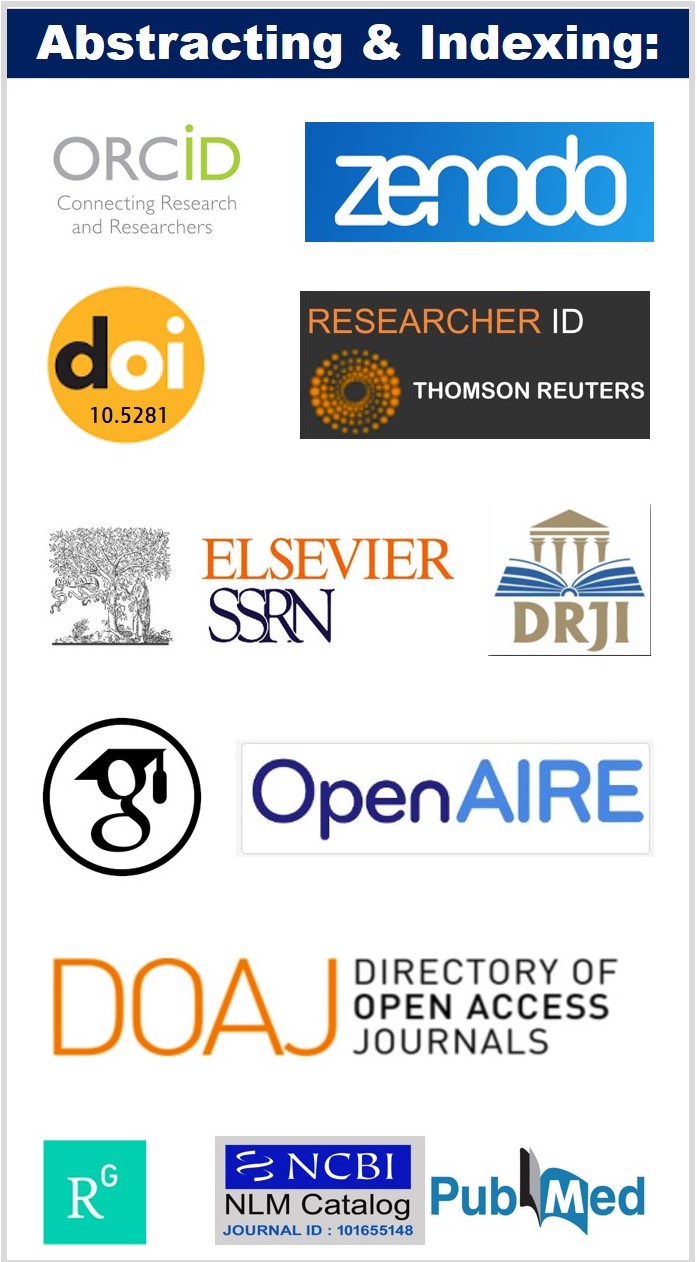Biolife. 4(2), pp 347-356.
The role of melatonin on GLUT-1 expression in rat testicular tissue metabolism in metabolic syndrome
Sally S Donia and Dalia R Alsharaky
Biolife
DOI:https://dx.doi.org/10.5281/zenodo.7318049
Abstract:
Within the testis, glucose is essential for spermatogenesis. Melatonin cooperates with insulin in the regulation of glucose metabolism. Since the effects of melatonin on male reproductive system remain largely indefinite, we investigate the effects of melatonin on (GLUT-1), male hormonal level and oxidative state in testicular tissue in metabolic syndrome. Twenty-four rats had been divided randomly into three groups: control, fructose, and fructose plus melatonin. Metabolic syndrome (MS) was induced by fructose rich diet and melatonin was injected at a dose of 5 mg/kg dissolved in 1% ethanol in normal saline. After the end of the 6th-week of experimental period, body weight, testicular weight, and fat accretion were assessed. Serum lipid profile, glucose, insulin levels, insulin resistance, serum testosterone were measured. Rats were sacrificed by cervical decapitation, fresh testis were used; one for preparation of homogenate (GSH & MDA in testicular homogenate) the other testis underwent immunohistochemistry for GLUT-1 receptors. Fructose consumption significantly increased fasting glucose, fat accretion, serum lipids, insulin levels and insulin resistance, successful establishment of the MS model. Serum testosterone was significantly decreased compared to the control group. In addition, testicular MDA significantly increased and testicular GSH significantly decreased compared to the control group. GLUT-1 expression was increased compared to the control group. Melatonin supplementation significantly decreased fasting blood glucose, fat accretion, serum lipids, insulin levels and insulin resistance, compared to fructose group. Serum testosterone was significantly increased compared to the control group. In addition, testicular MDA significantly decreased and testicular GSH significantly increased compared to the control group. GLUT-1 expression was decreased compared to the control group. Conclusion: GLUT-1 expression may be concerned in glucose metabolism of testicular tissue in fructose induced MS. Melatonin protective effect may be linked to its antioxidant & lipid lowering effect with increased GLUT-1 expression.
Keywords:
Melatonin; fructose; metabolic syndrome; insulin resistance; GLUT-1.
References:
[1]. Srikanthan K, Feyh A, Visweshwar H, Shapiro JI, Sodhi K. Systematic Review of Metabolic Syndrome Biomarkers: A Panel for Early Detection, Management, and Risk Stratification in the West Virginian Population. Int J Med Sci. 2016 Jan 1;13(1):25-38.
[2]. Malik S, Wong ND, Franklin SS, et al. Impact of the metabolic syndrome on mortality from coronary heart disease, cardiovascular disease, and all causes in United States adults. Circulation. 2004;110(110):1245–1250
[3]. Abdulla M H., Sattar M A.,and Johns E J. The Relation between Fructose-Induced Metabolic Syndrome and Altered Renal Haemodynamic and Excretory Function in the Rat Int J Nephrol. 2011; 2011: 934659
[4]. Elliott S S, Keim N L, Stern J S, Teff K, and Havel P J Fructose, weight gain, and the insulin resistance syndrome. Am J Clin Nutr 2002; vol. 76 no. 5 911-922.
[5]. Rayssiguier Y, Gueux E, Nowacki W, Rock E, Mazur A High fructose consumption combined with low dietary magnesium intake may increase the incidence of the metabolic syndrome by inducing inflammation. Magnes Res. 2006; 19(4):237-43.
[6]. Kapoor D, Malkin CJ, Channer KS & Jones TH. Androgens, insulin resistance and vascular disease in men. Clinical Endocrinology 2005; 63 239–250.
[7]. Corona G, Monami M, Rastrelli G, Aversa A, Tishova Y, Saad F, Lenzi A, Forti G, Mannucci E & Maggi M Testosterone and metabolic syndrome: a meta-analysis study. Journal of Sexual Medicine 2011a; 8 272–283.
[8]. Cunningham GR. Testosterone and metabolic syndrome. Asian J Androl. 2015; 17(2):192-6.
[9]. Maneschi E, Morelli A, Filippi S, Cellai I, Comeglio P, Mazzanti B, Mello T, Calcagno A, Sarchielli E, Vignozzi L, Saad F, Vettor R, Vannelli GB, Maggi M. Testosterone treatment improves metabolic syndrome-induced adipose tissue derangements. J Endocrinol. 2012; 215(3):347-62.
[10]. Stuart Wood I, Trayhurn P. Glucose transporters (GLUT and SGLT): expanded families of sugar transport proteins. Br J Nutr 2003; 89:3-9.
[11]. Sainio-Pöllänen S, Henriksen K, Parvinen M, Simell O, Pöllänen P. Stage specific degeneration of germ cells in the seminiferous tubules of non-obese diabetic mice. Int J Androl 1997; 20:243-53.
[12]. Kokk K, Veräjänkorva E, Wu XK, Tapfer H, Põldoja E, Simovart HE, Pöllänen P. Expression of insulin signaling transmitters and glucose transporters at the protein level in the rat testis. Ann N Y Acad Sci. 2007; 1095:262-73.
[13]. Maronde E, Stehle JH. The mammalian pineal gland: known facts, unknown facets. Trends Endocrinol Metab 2007; 18:142–149.
[14]. Cipolla-Neto J, Amaral FG, Afeche SC, Tan DX, Reiter RJ. Melatonin, energy metabolism, and obesity: a review. J Pineal Res 2014; 56:371–381.
[15]. Peschke E, Frese T, Chankiewitz E, Peschke D, Preiss U, Schneyer U, Spessert R, Muhlbauer E. Diabetic Goto Kakizaki rats as well as type 2 diabetic patients show a decreased diurnal serum melatonin level and an increased pancreatic melatonin-receptor status. J Pineal Res 2006; 40:135–143.
Article Dates:
Received: 5 April 2016; Accepted; 25 May 2016; Available online : 6 June 2016
How To Cite:
Sally S Donia, & Dalia R Alsharaky. (2016). The role of melatonin on GLUT-1 expression in rat testicular tissue metabolism in metabolic syndrome. Biolife, 4(2), 347–356. https://doi.org/10.5281/zenodo.7318049




